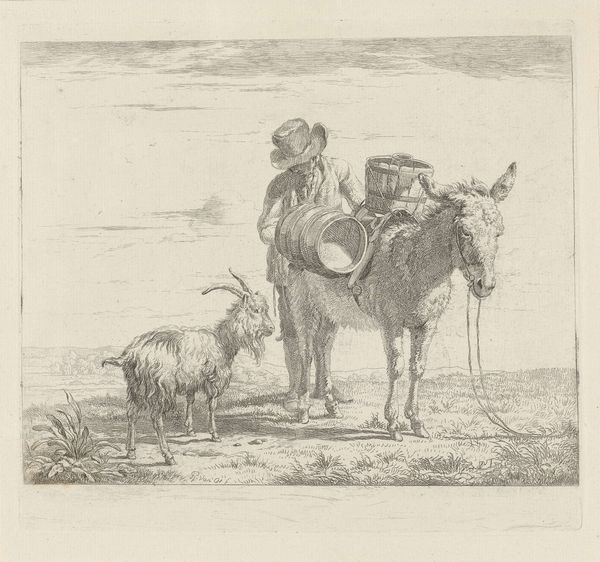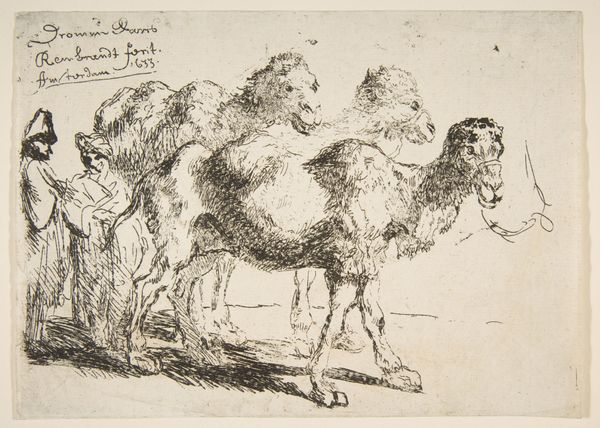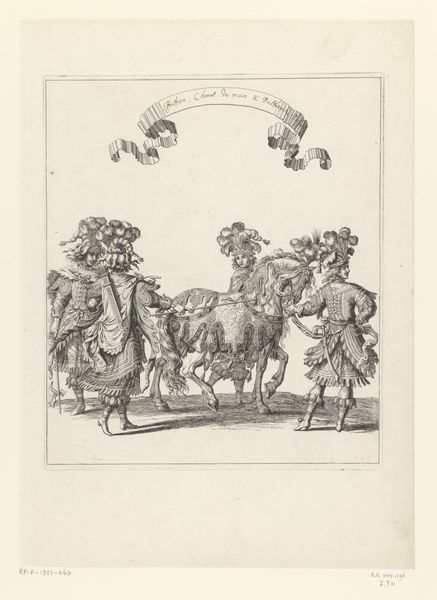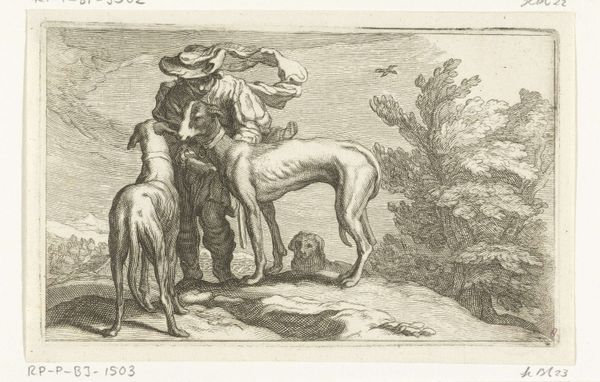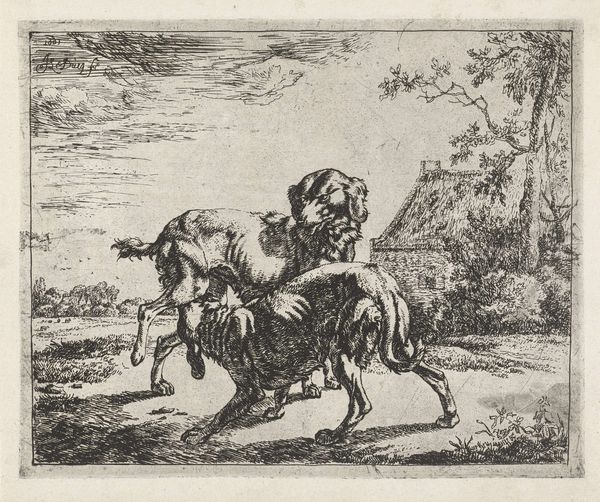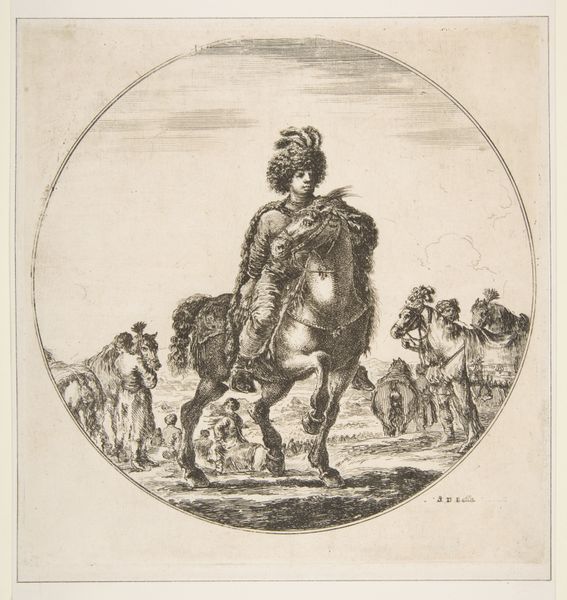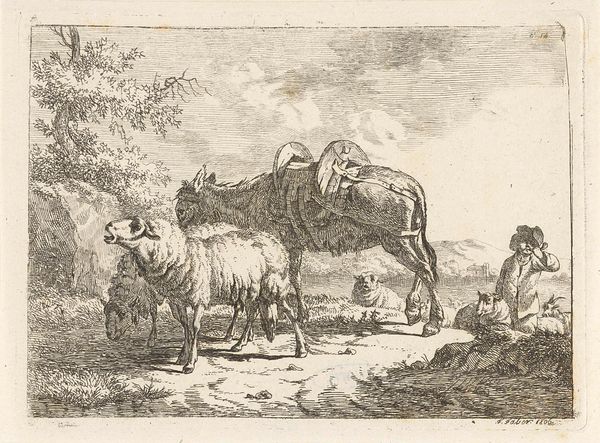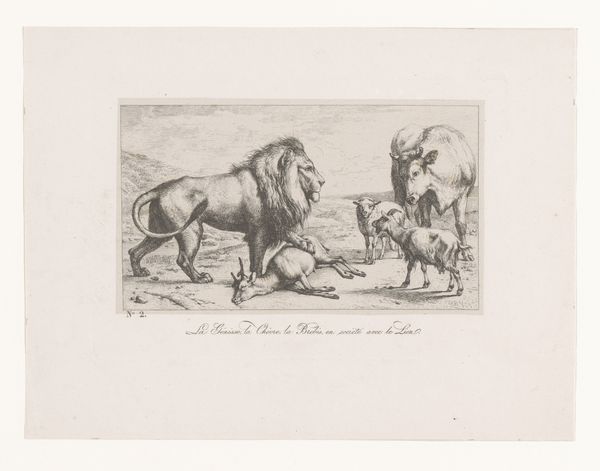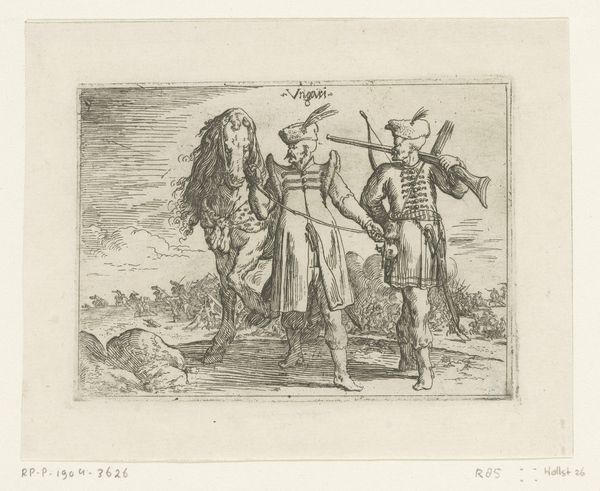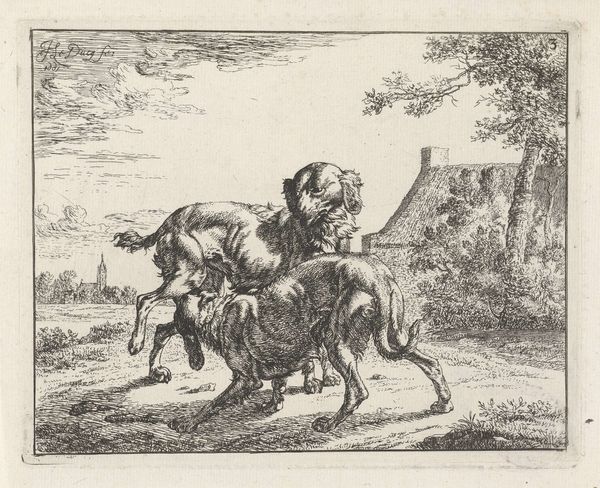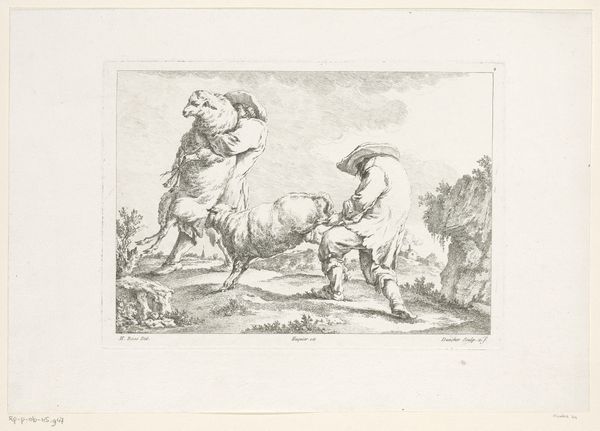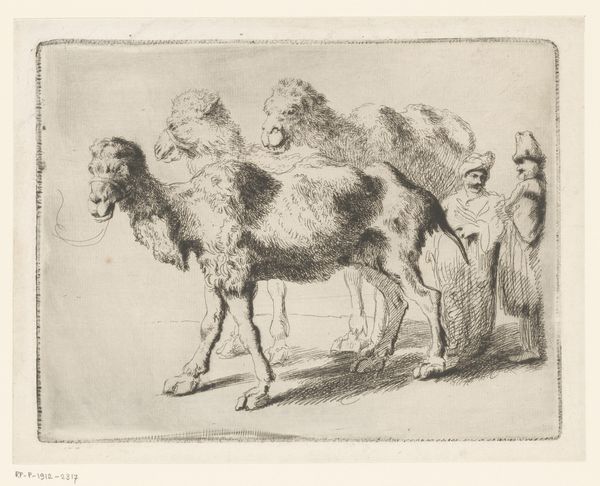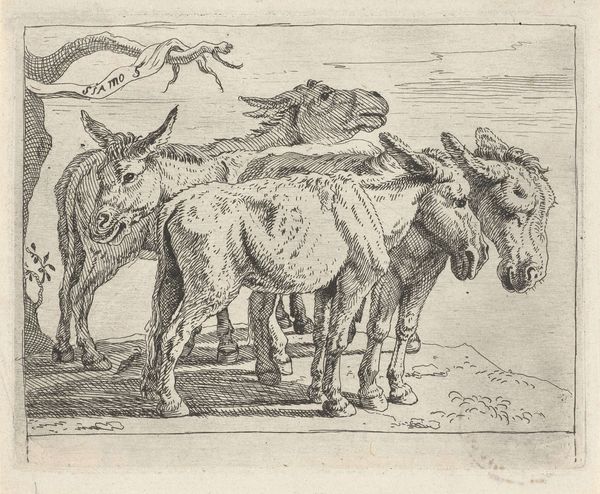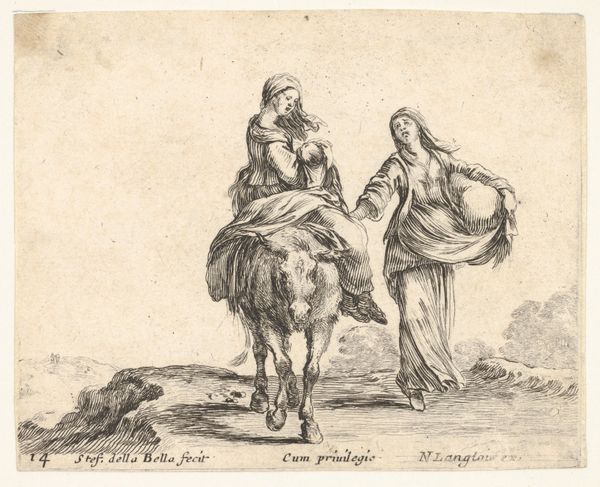
drawing, print, etching, paper
#
drawing
#
animal
# print
#
etching
#
landscape
#
figuration
#
paper
#
romanticism
#
realism
Dimensions: 194 × 250 mm (plate); 229 × 296 mm (sheet)
Copyright: Public Domain
Curator: Ah, camels. Tell me that doesn't take you places! I find this 1817 etching, "Dromedary and Camel," by Johann Adam Klein, positively transporting. Editor: They look hot, burdened and like they might spit. There's a stillness that also reads like resignation, don’t you think? Something about their drooped mouths... Curator: That's interesting. To me, there's an openness, a raw sort of realism. The landscape stretches behind them – you feel the vastness. But they endure. Klein's capturing more than just an animal, he's depicting a spirit. The weight and their capacity to handle it. It is so them. Editor: True. And let's consider what "endurance" meant in 1817. Colonial projects were intensifying across Africa and Asia. These animals *are* transportation, tools in a system of exploitation, and cultural exchange in Europe. Are we romanticizing beasts of burden in their literal burden or admiring the very method that drives imperialism and environmental loss? Curator: That’s a loaded reading. Perhaps. Yet, when I look, the realism overrides any potential symbolic exploitation to me. Take the textures—Klein gives the camels dignity in rendering the animals as realistically as he sees them. The shaggy hair on their necks, the lean muscles in their legs—nothing romanticized. Editor: That so-called "realism" served very specific ends, though, and this artwork becomes a document. Realism here naturalizes power. Did these animals get a say in their depiction or purpose? Are the power dynamics visible in the work as part of an aesthetic operation? Curator: So, beauty in the service of oppression. I’m not disagreeing exactly. Still I choose to pause. Look how beautifully Klein has rendered this moment in time. I think it reveals the hand of an artist working at his finest, with keen attention to form and character. And even beauty can be political, can't it? Editor: Always. Always already. It's inescapable. And a vital place to start the inquiry. Curator: Right. I'm all for the inquiry. Editor: So, if someone walks away thinking about those complexities...well, then this drawing continues its work. Curator: Indeed. It's found its true north and then some.
Comments
No comments
Be the first to comment and join the conversation on the ultimate creative platform.
